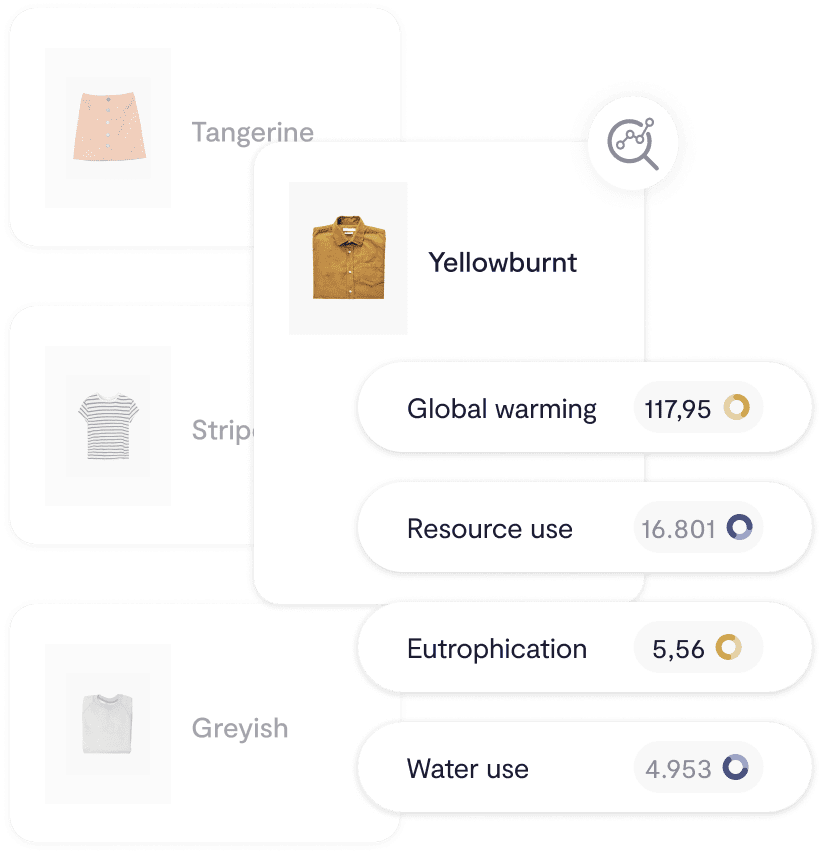The fashion industry is immersed in a linear production model based on “take-make-dispose” that accelerates the depletion of natural resources. The increase in the world population together with the massive growth in the demand for fashion, has made overproduction one of the biggest problems in the textile sector. In a scenario in which the scarcity of resources becomes noticeable day after day, it is essential to implement strategies that enable the development of your business regardless of the consumption of limited resources. Below we show you the keys to guarantee the growth of your company without abusing natural resources.
Today we need about 1.75 planets to produce the resources required by our rate of consumption
The excessive consumption that prevails in the fashion industry as a consequence of the pace imposed by fast fashion describes a situation in which the use of natural resources has exceeded the capacity of the system. Today we need about 1.75 planets to produce the resources required by our rate of consumption. It’s estimated that by the year 2030, we will need 2 planets to assume this productive level. We often forget that we only have one.
Slowing down and implementing strategies that allow you to progress as a business without having to contribute to the depletion of natural resources is essential. Increased sustainability efforts are meaningless if changes in production practices aren’t accompanied by a reduction in the volume of items produced. In this sense, decoupling the profitability of the fashion industry from the number of new products sold is an urgent need for the transition of the sector towards a sustainable system at an environmental, social and economic level.
The financial growth of your company can be decoupled from the consumption of limited resources by implementing alternative systems such as circular initiatives. A transversal change throughout the entire value chain that not only implies benefits for the environment, but also improves the efficiency of the model itself, generating greater economic performance.
Slowing down and implementing strategies that allow you to progress as a business without having to contribute to the depletion of natural resources is essential
What opportunities does reducing the consumption of limited resources offer your business?
- Cost control. Frequently, the scarcity of resources leads to the increase in prices of raw materials. A circular supply model can contribute to better control of costs related to supplies.
- Comply with the legislation. There are many institutions that are implementing new regulations related to waste management and circular economy initiatives. Getting ahead of its entry into force will allow companies in the textile sector to deal with the risks arising from these regulations in advance.
- Satisfy stakeholder expectations. Consumers aren’t the only ones demanding greater sustainability. Investors, employees and other stakeholders increasingly expect the trend to move away from excessive consumption of natural resources. Companies can meet expectations by implementing circular economy strategies and position themselves as leaders in their segment.
- Development of new business models. Diversifying the business strategy and using as a resource what others consider waste is what is promoting the growth of alternative systems such as the resale market.
How to ensure your growth by reducing resource consumption?
To take action, you must first shed light on the current supply chain. Identifying those stages of the life cycle of the products that involve a greater consumption of resources will be essential to take measures. For this reason, Life Cycle Assessment plays an important role in providing critical information when addressing current challenges in supply management, a tool with great potential to optimize business decision-making.
The metrics, data and quality indicators calculated from an LCA will be extremely useful as long as they are part of a global strategy that seeks to implement solutions that accelerate the transition of your business towards sustainability. These are the issues that you must follow to optimize the consumption of resources developed by your company:
Analysis of the environment and detection of opportunities
- Definition of business goals in resource management.
- Evaluation of current performance by collecting value data throughout the whole supply chain.
- Analysis of the legislative context and necessary tools to cover its requirements.
- Study of the market cost structure.
- Search for waste management models.
Implementation of a circularity-oriented strategy
- Implementation of business goals throughout the entire value chain.
- Assessment of the environmental impacts of each product.
- Use of impact assessment by product to optimize its development.
- Detection of scalable opportunities that improve the efficiency of production processes and waste management.
- Definition of collaborations and associations that could reinforce the actions implemented in the supply chain.
- Development of a roadmap to capture cost savings and define the most optimal supply network.
Monitoring and control of resources consumed
- Performance measurement to record the progress made in consuming resources.
- Evaluation of the improvement of business profitability.
Resources are limited but the possibilities to continue progressing in the fashion market are endless. Sustainability opens a new path full of opportunities for those businesses that seek new formulas for the design, manufacture, distribution and promotion of textile products without neglecting the consolidation of their competitive advantage. At BCOME we have the tools you need to get started on this long journey. Remember, sustainability doesn’t have to be complex, we make it simple for your business, shall we talk?






